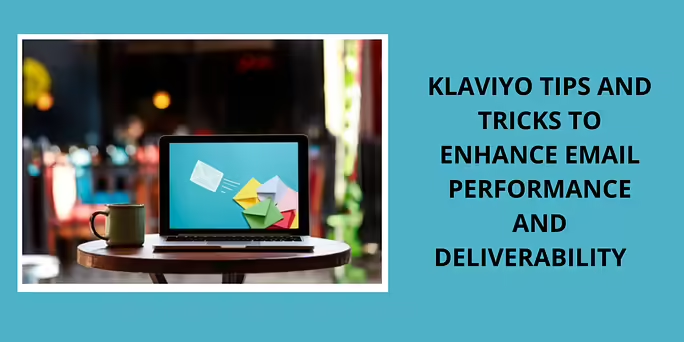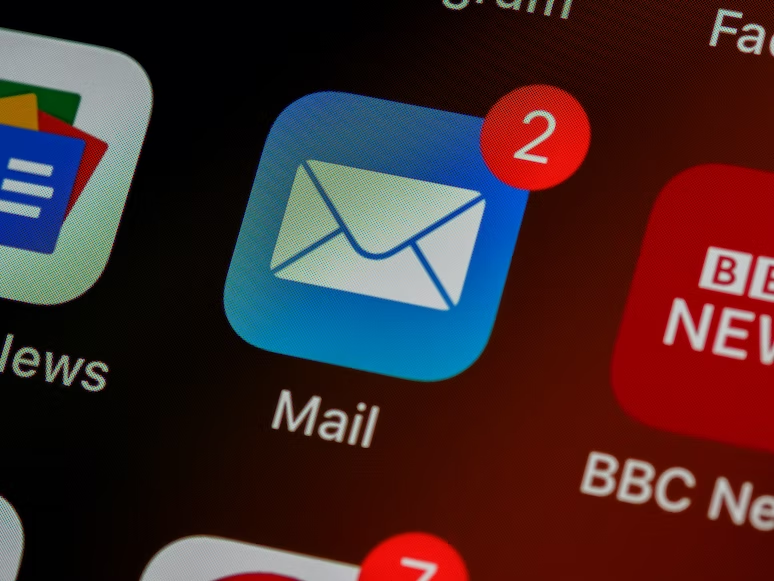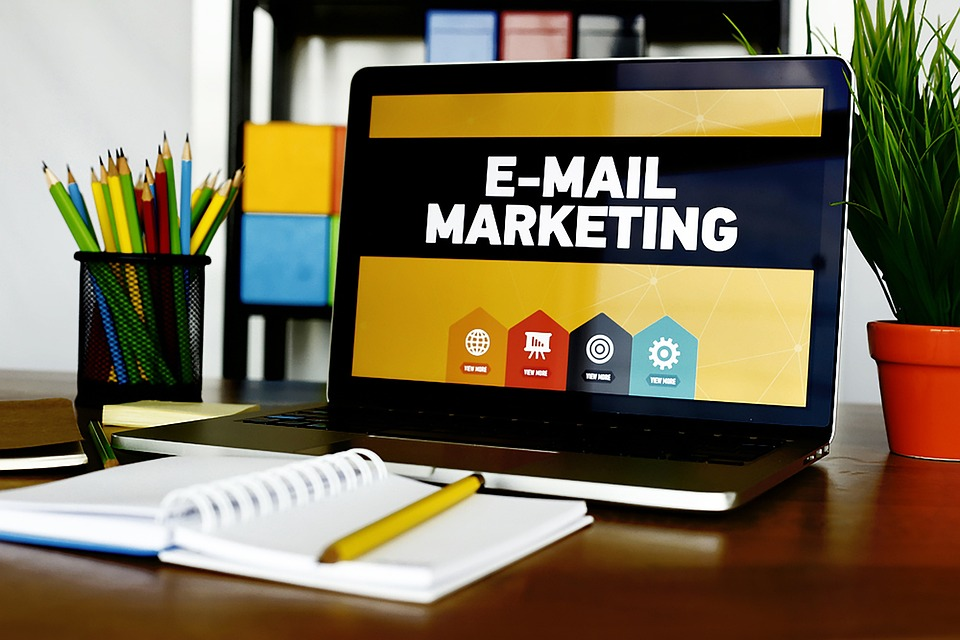
Today email marketing has evolved as one of the efficient ways to promote a business and connect with potential and prospective customers.
It is an effective form of marketing that involves sending emails to customers that generate profit from driving conversions, promoting products, and developing brand loyalty.
Exchanging emails is a direct mode of communication with the customers without any barrier and has a lot of advantages over other means of marketing communication.
It involves a strategic approach where brands send promotional emails to people in large quantities, often divided into segments based on demographic & behavioral factors.
The main agenda is to generate sales by constructing promotional emails with a strong call to action and driving leads. Moreover, building loyal customers is a vital email objective that can be achieved easily with online email marketing campaigns.
When choosing the right email marketing platform, klaviyo is a winner! If you are looking for an email automation platform that lets you send emails to the right targeted audience, Klaviyo is for you.
Why Klaviyo is the Right Platform for E-Commerce Marketing?
Klaviyo is a growth-oriented email & SMS marketing platform that delivers personalized emails across several email marketing channels.
If you want to grow your business, build customer relations, and bring goodwill to your brand, Klaviyo is what you need. Here are a few reasons to help you better understand why Klaviyo is the right pick for you.
1. Advanced Audience Segmentation
Email list segmentation is one of the crucial aspects while designing an email campaign. List segmentation refers to dividing the master file of email contacts into smaller groups where each sub-divided group differs.
They might fit into a specific age group, resembling particular behavior and more. Using Klaviyo’s advanced segmentation feature helps filter the contacts group-wise and enables sending relevant and impactful emails to each subgroup.
On top of this, you can create your templates based on the factors that lead to hyper-personalized campaigns, which means a better conversion rate.
Segmentation allows the brands to create and execute highly targeted marketing campaigns based on customers’ behavior, leading to a personalized experience.
2. Built-in Templates
Designing an email template for a marketing campaign is more complex. It takes a lot of dedication and hard work to craft a suitable email template to appease the target audience.
Klaviyo makes it easy and convenient to create your email templates. It offers basic templates for every type of business and can be edited and customized.
On the templates, you can add images, social links, texts, etc., to give a personal touch to your email. These pre-built templates are tailored to meet your brand’s needs and can be edited in minutes with easy-to-use tools.
3. Smart Sending Feature
One of Klaviyo’s best features is the smart sending ability, where Klaviyo automatically removes those recipients from the list who have already received the email before.
This advanced feature makes the life of an email marketer easier and ensures that your subscribers a bombarded with repeat emails.
The smart sending option lets you skip subscribers you have recently sent any mail. It lessens the chances of users getting annoyed with endless emails.
4. Affordable Pricing
Klaviyo is an excellent tool for e-commerce stores and marketers who aspire to grow their business into a big brand. And its cost-effective pricing is one of the game-changing factors which makes it a preferred email platform to drive traffic to the brand’s website.
Klaviyo sets the price based on emails sent to a specific number of people every month. For example, if you have a list of 1000 email addresses but choose to send emails only to 100, then you only pay for those 100 email addresses to which emails have been successfully delivered.
5.A/B Testing
A/B testing in terms of email marketing refers to sending one variation of mail to one specific group of segmented lists and a different variation to another group from the same segment.
The goal of A/B testing is to check which variation of email performs better and drives more leads.
If you use email tools like Klaviyo, this whole process is called split testing, where you test different variations from one email. It gives data-backed results and lets you increase the engagement rate, reduces the bounce rate, and minimizes the risk of campaign failure.
Factors that Affect the Email Deliverability

Image credits: https://unsplash.com/photos/LPZy4da9aRo
- Your sending habits – Email etiquettes influence the deliverability rate. When writing an email, you represent yourself and the brand, which means writing clearly and concisely.
- Who do you send it to? Email marketers should regularly update their subscriber list to ensure sending emails only to authentic contacts who have willingly opted.
- The content of your email- To keep the audience engagement intact, ensure the email copy is high quality, persuasive, and contains relevant links.
- Your sending infrastructure- Email infrastructure includes the framework composed of hardware & software responsible for ensuring email delivery.
Klaviyo Tips and Tricks to Enhance Email Performance and Deliverability
1. Identify Active Audience & Filter the Email List
When sending emails to people in the contact list, there are often recipients who might have been unengaged.
Those email contacts might be flagged as spam, and uploading a cluttered email list on Klaviyo may reduce the deliverability rate.
It calls for cleaning the email contact list and removing all the inactive users and invalid email addresses. It should be done at least once a month.
After filtering the list of engaging customers and removing expired contacts, try designing the email marketing strategies as per the active audience behavior.
2. Provide Engaging Content in Email

Picture credits: https://unsplash.com/s/photos/email-campaign
While sending emails to potential customers, content significantly impacts whether your emails reach the audience’s inbox. While crafting an email, ensure the copy is engaging enough to win over the audience.
The subject line is the first thing a recipient notices when a mail notification pops up. The subject line should be witty, short, crisp, and catchy enough to persuade the audience to open the email.
The email body should have a prominent CTA in the form of upcoming sales, discounts, or product recommendations, resonating with the audience’s buying behavior.
The email should have mobile-friendly content to engage recipients who mainly check their emails on a cell phone.
3. Segment the Email List
Segmenting the email list refers to the process of splitting the email list based on audience-specific parameters.
The goal of every email campaign is to drive revenue. However, that should also align with the subscriber’s preferences. Segmented and targeted email campaigns drive more ROI by simply sending the correct number of emails.
Email segmentation can be done based on the following:
- Customer engagement level wherein you can send emails to active recipients who respond.
- Customer demographics include age, location, and gender to personalize emails and increase open rates.
- Customer’s purchase history, where marketing experts send emails to people who have purchased a similar product in the past
4. Consider Double Opt-in
Double opt-in is an exciting add-on feature in email marketing where the users must fill up a form, verify the email address, and confirm their interest.
This authenticates the user’s consent to receive the emails, and you can start sending the email to potential recipients intrigued by your emails.
As a result, Double Opt-in decreases the email list by filtering engaging receivers, removing inactive users, unintentional signs ups and spam email contacts.
5. Make It Easy to Unsubscribe the Recipients
Being smitten by exciting offers and discounts, people often end up signing up for email subscriptions. These emails include weekly/monthly newsletters, daily deals, and alerts.
These emails hit up the inboxes in bulk and often get annoying. That’s why senders must provide the contacts with an easy way to unsubscribe or opt out of the email campaign.
When recipients willingly choose to unsubscribe from regular email alerts, emails are less likely to go into the spam folder and do not hamper the email deliverability rate.
You can also allow the audience to set a particular time to receive the emails. The email subscription experience is crucial for communication between the user and the sender.
Technically it is better to lose irrelevant receivers who are not interested in your emails than to have them ignore or report them as spam.
The process should be simple and quick, and the request from the sender’s end should be approved immediately.
6. Configure Email Sending Structure
While creating automated email flows using Klaviyo, you can send emails from Klaviyo’s shared infrastructure. You can also send emails by creating your infrastructure.
Setting up a dedicated domain and using your brand’s name to send emails to the targeted list is highly recommended. It will increase brand awareness and enable DKIM and SPF authentication, which testify to the email sender’s identity.
Sending emails to consumers is not a cakewalk, as the whole process involves a lot of security threats. And this is where email infrastructure comes into play.
How to Calculate Email Deliverability Metrics?

Picture credits: https://pixabay.com/photos/email-marketing-laptop-desk-5937010/
While the content tonality used while crafting an action-driven email campaign is a total game changer, monitoring the performance of such campaigns is also essential.
The following factors determine the successful delivery of emails.
1. Bounce Rates
Bounced emails are emails that are blocked or sent back to the sender. It usually happens due to delivery issues, invalid addresses, etc.
Similarly, in email marketing, bounce rate refers to the percent of email contacts in your list that didn’t receive any email as the recipient mail server returned it.
Formula- No. Of bounced emails/ No. Of emails sent x 100
2. Open Rate
Open Rate refers to the percentage of emails that the receivers open and read.
Formula- Opened Emails/ Sent Emails – Bounced Emails x 100
3. Click Through Rate
The click-through rate refers to the number of readers who click on any hyperlink, image, or call to action. These links divert the user to any landing page on your website.
Formula- Email Clicks/ [Sent Emails – Bounced Emails]) x 100
4. Unsubscribe Rate
The unsubscribe rate in email is when people unsubscribe from your email list as they no longer wish for the email alert.
Formula- (Unsubscribes/Delivered Emails) x 100
5. Spam complaint rates
The spam complaint rate is the number of people who report emails they receive as spam out of the total number of emails sent from the sender’s end.
Formula- No. Of emails reported/ Total Emails sent x 100
The Bottom Line
Email marketing is still one of the most influential marketing channels for marketers. It leverages email communication to attract customer’s attention to the marketing channel.
If you are searching for the best marketing automation system, it ends at Klaviyo. It is a cloud-based marketing tool that has gained recognition recently.
Klaviyo helps grow online businesses and build a brand from scratch. With this automated platform, brands can send personalized emails to the targeted list that genuinely shows interest.
No matter the size of your business, Klaviyo trips and tricks discussed above will help to leverage your email signups most effectively. From promotional emails to scheduled newsletters- with Klaviyo, it’s all possible!
